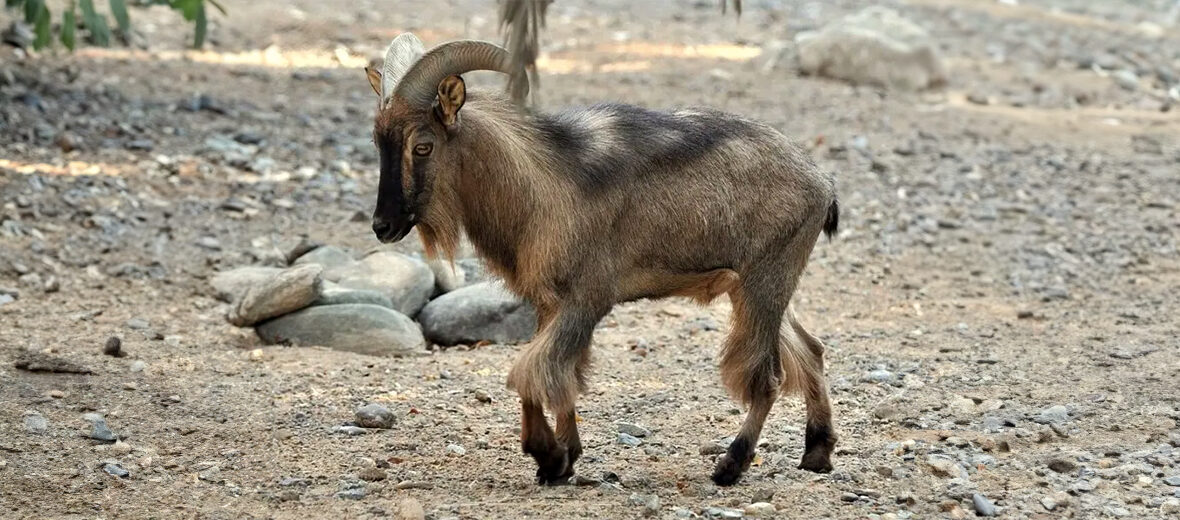
The Arabian tahr was recently placed into a monotypic genus, Arabitragus. These critters dwell in eastern Arabia. Sadly, they face many threats such as habitat destruction at the hands of farming, ranching, mining, and quarrying; roads and railroads that divide their territory and can cause vehicle strike (being hit by vehicles); illegal hunting; illegal trapping; habitat alterations at the hands of residential and commercial developments; invasive species, that cause diseases and competition for food; and climate change, which causes severe droughts. The IUCN lists these critters as Endangered.
First the Stats…
Scientific name: Arabitragus jayakari
Weight: Up to 49 lbs.
Length: Up to 37.4 inches
Height: Up to 25.2 inches, at the shoulders
Lifespan: Up to 22 years
Now on to the Facts!
1.) Their populations as of 2018 were just 2,324 and they are decreasing.
2.) These are the smallest species of tahr.
3.) They prefer to dwell on the steep and rocky slopes of the Hajar Mountains in Oman and the United Arab Emirates, at altitudes up to 5,900 feet above sea level. These critters can also be found around Jebel Hafeet.
4.) A group of tahrs is called a mob.
5.) Oldfield Thomas first described these tahrs in 1894.
But wait, there’s more on the Arabian tahr!
6.) Arabian tahrs are solitary or can dwell in small mobs of a female and her kid.
7.) Females undergo up to a 145 day gestation (pregnancy) that yields a single kid.
Did you know…?
It is believed that they were, at 1 time, preyed on by the Arabian leopard, before its extirpation from the region recently.
8.) Grasses, leaves, shrubs, and fruits of a variety of trees are all browsed on.
9.) Being very dependent on water, these tahrs need to drink every couple of days. To do so, they will descend from their higher elevations to search for rivers or creeks.
10.) In 1973, conservation efforts were created to protect these tahrs, and in 1975, a tahr protection program was introduced in the Hajar Mountains. In 1980, a captive-breeding program was instituted at the Omani Mammal Breeding Center to reintroduce captive-bred individuals back into their original habitats.
11.) Arabian tahrs are diurnal (active during the day).
Now a Short Arabian Tahr Video!
This video talks about all 3 species of tahrs.
Be sure to share & comment below! Also, check out the Critter Science YouTube channel. Videos added regularly!
Want to suggest a critter for me to write about? Let me know here.
Some source material acquired from: Wikipedia & IUCN
Photo credit: Animalia.bio



